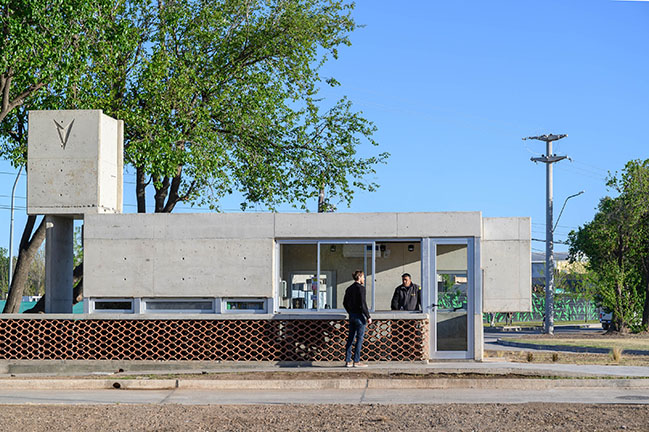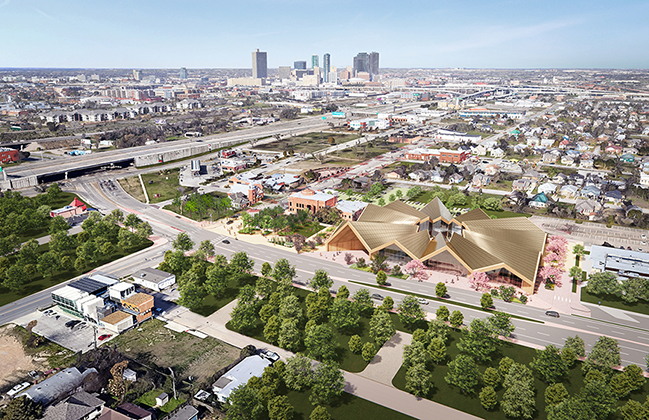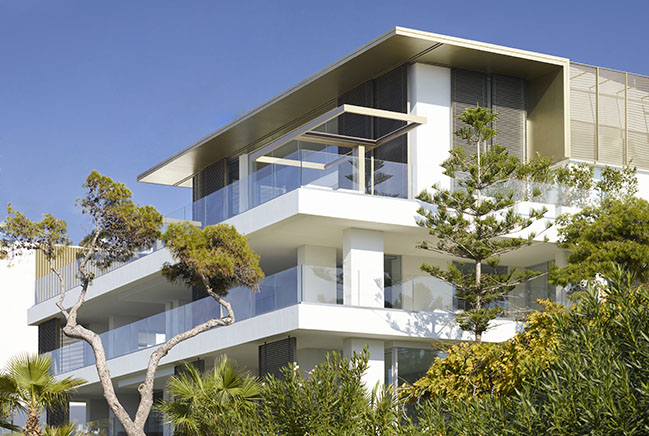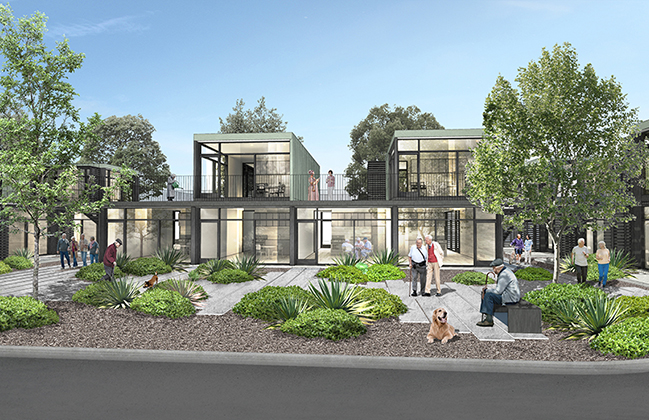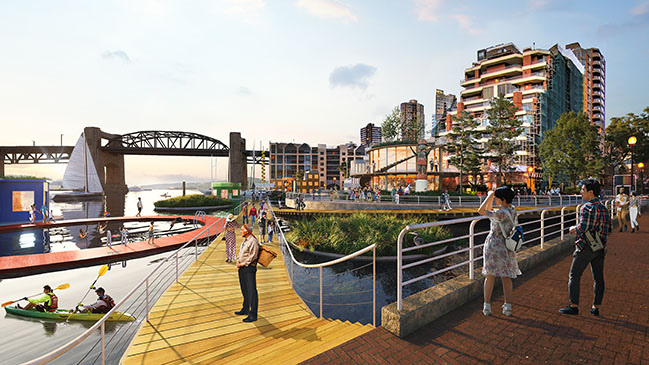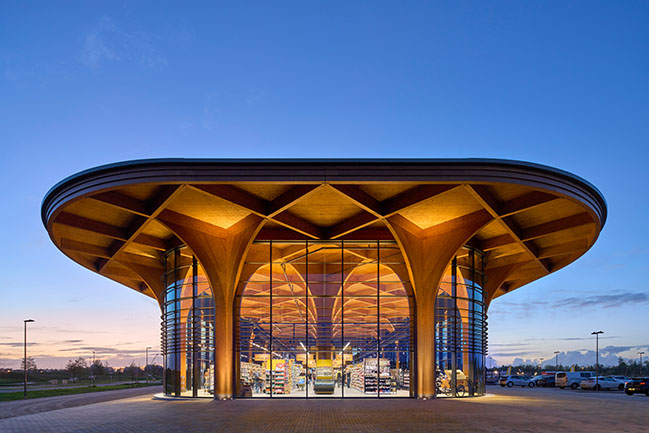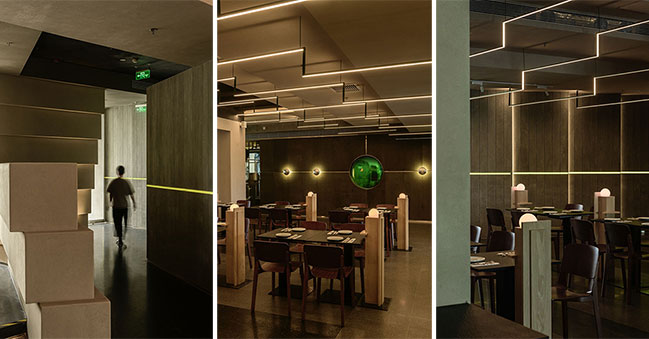12 / 01
2022
Zaha Hadid Architects joined the delegation representing Odesa, Ukraine at the 171st General Assembly of the Bureau International des Expositions (BIE) in Paris to present the ODESA EXPO 2030 bid proposal...
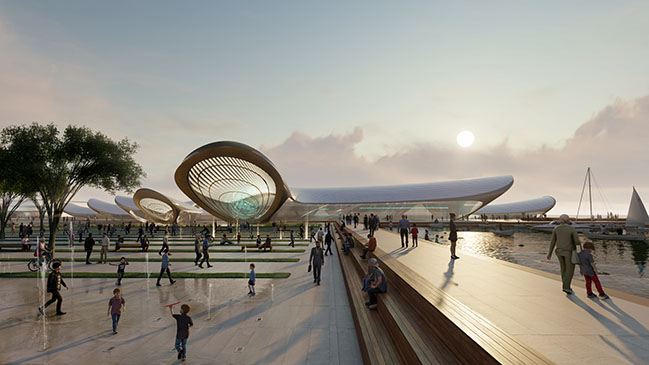
From the architect: Future development in Ukraine will see a fundamental transformation of the country’s economy towards energy efficiency and low-carbon technologies. Zaha Hadid Architects’ design for ODESA EXPO 2030 targets the effective re-use of all facilities after the exhibition has closed, a challenge that all Expos share with major public events the world over; creating an Expo of the future where nothing is wasted.
ODESA EXPO 2030 - the first Expo to be hosted in Eastern Europe - will follow the ‘2030 Agenda for Sustainable Development’ adopted by the United Nations to embrace economic and social sustainability, implement strategies that tackle energy efficiency and reduce the consumption of resources while improving education and encouraging economic growth throughout the region.
“In a city that has always been multinational and multicultural, a city of diversity with ancient connections throughout the world, when you visit Ukraine and our Odesa in 2030, you will feel the power and culture of not just one country and one city… you will feel the potential of all humanity.” Volodymyr Zelenskyy, President of Ukraine
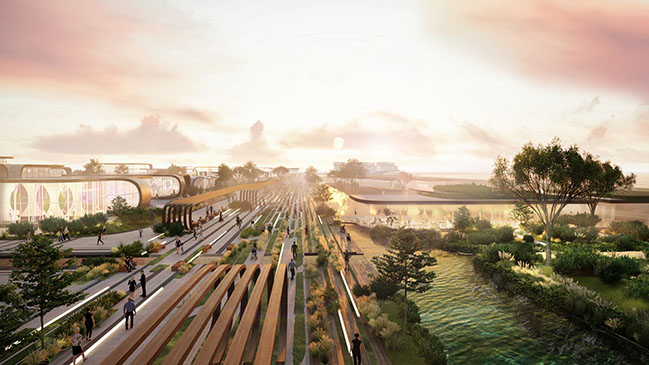
The site for ODESA EXPO 2030 was previously intensively-farmed land lacking in biodiversity on the Khadzhibey estuary. Near the centre of the city, this unique location ensures EXPO 2030 is easily accessible and can be fully integrated within the city’s transport infrastructure, community and cultural life.
Visitors to Odesa can reach the EXPO site in 25 minutes from the city's airport or railway station, and in just 15 minutes from its ferry port. Odesa’s historic old town and museums are only 20 minutes from the site while the city’s variety of beaches are between 15 and 30 minutes away.
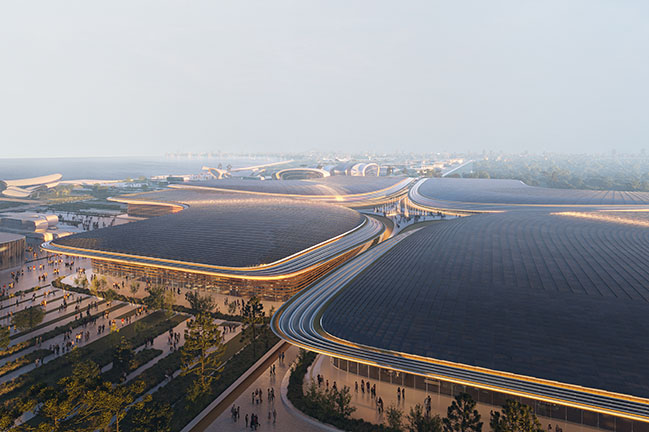
The EXPO 2030 site is organized around five main elements. The Main Boulevard connects all areas of the EXPO, with a series of plazas with national pavilions to the south of the boulevard and the new coastal eco-park on the Khadzhibey estuary to the north. Services, logistics and accommodation for visitors, participants, and staff are located at either end of the main boulevard.
ODESA EXPO 2030 is designed first and foremost with legacy in mind. The masterplan is focused around a cluster of four central pavilions. After the Expo, these large pavilions have been designed to provide 80,000 sq. m of flexible exhibition halls for trade fairs and events adjacent to the Expo’s conference centre and hotel to become southern Ukraine’s first fair exhibition hub.
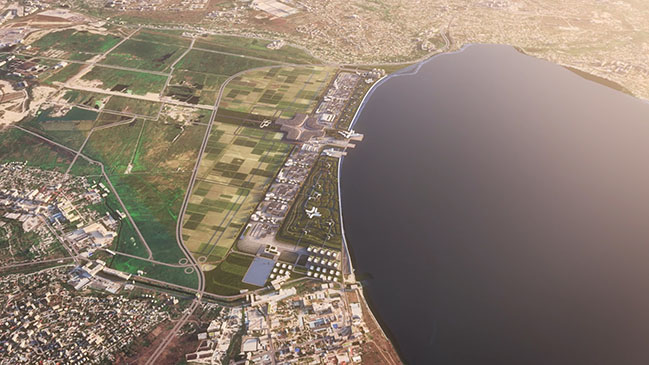
Following EXPO 2030, the national pavilions have been designed to be dismantled and redeployed as new civic buildings throughout Ukraine – allowing the entire Expo site surrounding the new conference centre and exhibition halls to be returned to nature with re-established wetlands integrated into this new coastal eco park near the city centre.
The bespoke approach to designing and constructing national pavilions of previous Expos has often resulted in significantly increased construction costs and time, together with higher embedded carbon and reduced flexibility for any future use. Addressing these issues, ODESA EXPO 2030 will offer the participating nations the choice of a kit-of-parts to construct their pavilions.
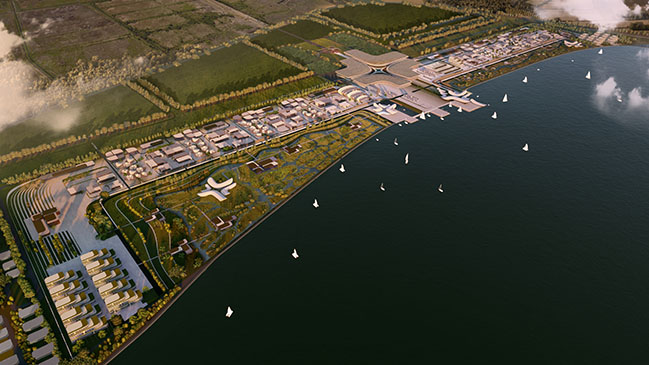
This flexible modular system will provide participating nations many varying options to design their pavilion using practical, creative and visitor-friendly principles that enable each nation to individually reinterpret the over-arching theme of EXPO 2030 via their country’s unique cultural expression. Each modular component will consist of approximately 25% of a standard pavilion’s 1,600 sq. m footprint and can be combined with a variety of other modular elements to create each country’s desired exhibition area.
Via a digital configurator tool, participating countries will be able to select and connect components to form their pavilion and customize the façade design choosing amongst a set of material options with the lowest possible carbon impact.
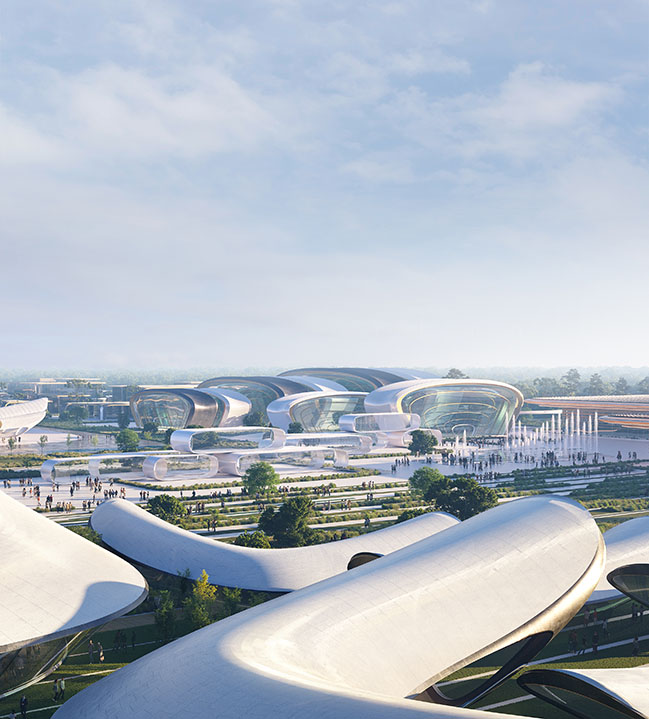
After EXPO 2030 closes, individual participants can choose to transport their modules to their home countries – or donate their pavilion’s components to be shipped by barge and reassembled throughout Ukraine for re-use as kindergartens, schools, medical clinics or subsidized studios and workspaces for Ukraine’s creative and digital industries.
Designed specifically to fit within the shipping barges that transport goods within the Black Sea, Azov Sea and Dnipro River, the modules can easily be delivered to Ukraine’s major cities, where they will be re-used as civic and social infrastructure for communities across the country.
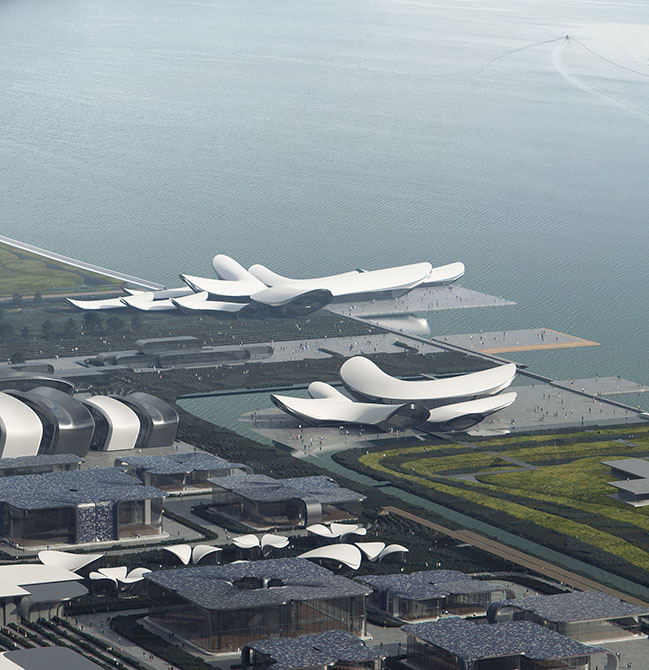
By adopting modularity with digital design and fabrication methods, this system will ensure EXPO 2030’s pavilions can be economically fabricated quickly off-site by the local supply chain in Ukraine. This system also ensures each pavilion can be installed, dismantled, shipped and re-installed in a fast and efficient process. Combined with Ukraine’s existing manufacturing and digital expertise, this modular system can help to establish future-proofed local building fabrication enterprises throughout the country.
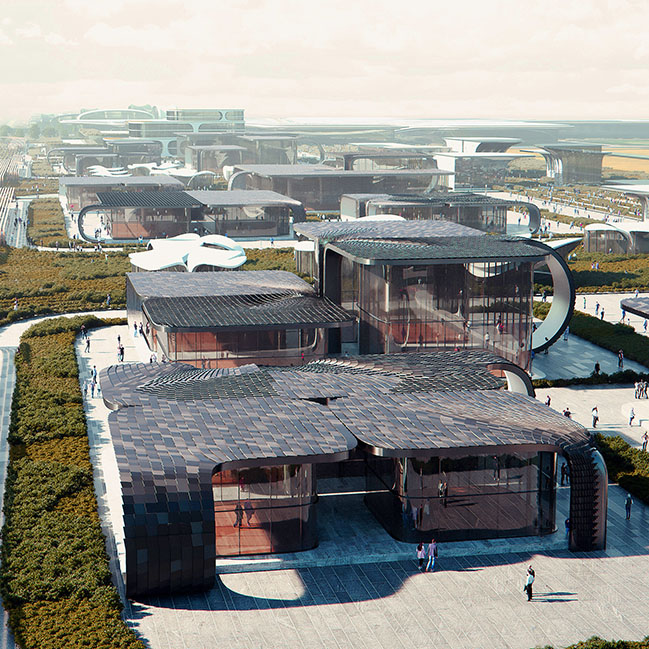
ODESA EXPO 2030 will minimize the use of concrete with extensive use of recycled materials from damaged and demolished structures throughout southern Ukraine. Renewables will be integrated in the design of the pavilions including photovoltaics on all roofs while wind turbines connected to the EXPO 2030 micro-grid will contribute towards an energy–positive site supplying its own energy demand, but also supplying renewable energy to the local community.
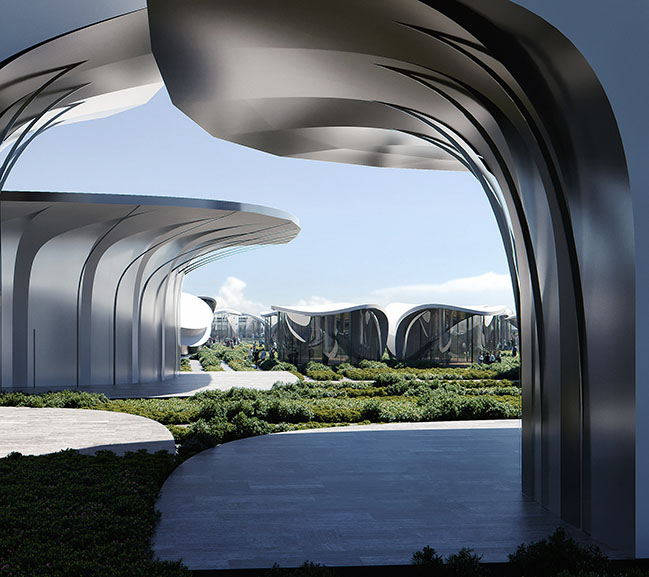
Architect: Zaha Hadid Architects (ZHA)
Client: NGO 'Civic Council of the EXPO 2030 Odesa'
Location: Odesa, Ukraine
Project Director: Manuela Gatto ZHA
Project Associate: Yevgeniya Pozigun
ZHA Project Leads: Thomas Bagnoli
ZHA Project Team: Ghanem Younes, Yun Yu Huang, Malek Pierre Arif, Zixin Ye, Catherine McCann, Jose Pareja-Gomez, Delyan Georgiev, Bowen Miao, Vera Kichanova, Yaniv Hatiel
Visualisation: MIR, NORVISKA, JK Lab Architects, Zaha Hadid Architects
Multimedia & Animation: Morean GmbH
Animation: Beehive
Video: Morean
Dossier Development
General Contractor for Dossier Development: CIVITTA
Designer of the Dossier: TopLead
Masterplan Concept and Design Visualisation: Zaha Hadid Architects
Venue Planning: Lord Cultural Resources
Landscape Design: West 8
On-site Transportation and Mobility: Cundall
Sustainability: Atelier Ten
Urban Planning: Public Urbanism Personal Architecture
French Translation: TaskForce
Smart Expo Strategy: Jaanika Merylo, Atelier Ten
Preliminary Concept Development: Gres Todorchuk
EXPO Theme Ideation and Conceptualization: Gerd Leonard
Communication Strategy Development: GN Consulting
Modularity studies: ZHA CODE
Government and Municipality
Ministry of Economy of Ukraine
Ministry of Digital Transformation of Ukraine
Ministry of Infrastructure of Ukraine
State Tourism Development Agency of Ukraine
Odesa Regional State Administration
Odesa City Council
Regional development agency of Odesa region
Ideation Support Partners
D-Group EXPO-2030
PUBLIC JOINT STOCK COMPANY «BANK VOSTOK»
KADORR Group
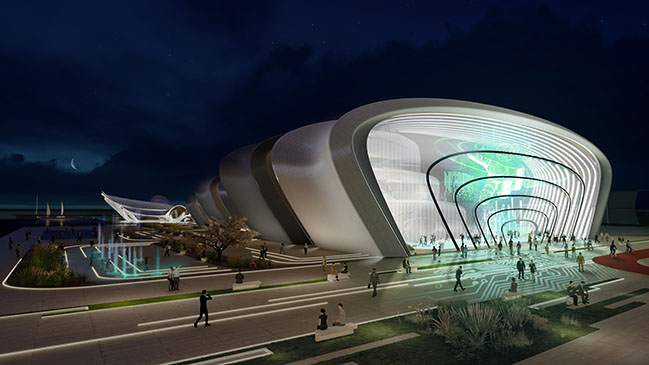
ZHA presents ODESA EXPO 2030 masterplan proposal at BIE General Assembly
12 / 01 / 2022 Zaha Hadid Architects joined the delegation representing Odesa, Ukraine at the 171st General Assembly of the Bureau International des Expositions (BIE) in Paris to present the ODESA EXPO 2030 bid proposal...
You might also like:
Recommended post: WAA Riverside Gastropub design by Fon Studio
